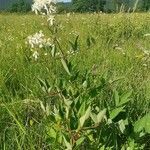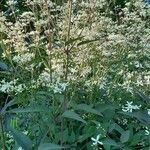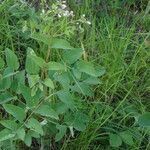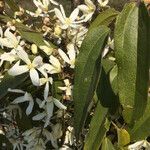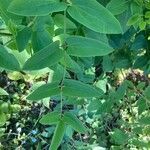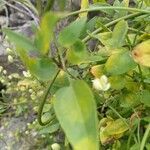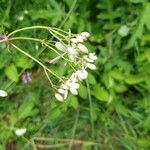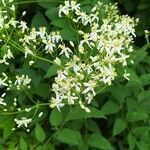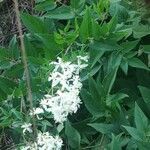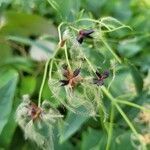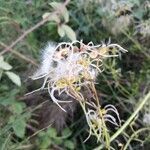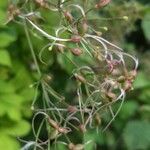An erect plant. It keeps growing from year to year. It grows 0.9-1.5 m tall and spreads 0.9-1.2 m wide. The stems have lines along them. The leaves are large. The leaves have leaflets along the stalk. There are 5-7 leaflets. These are blue-green and pointed. The flowers are small and white. They are in large panicles. The fruit are dark brown and round. The seeds are compressed with long yellowish tails.
